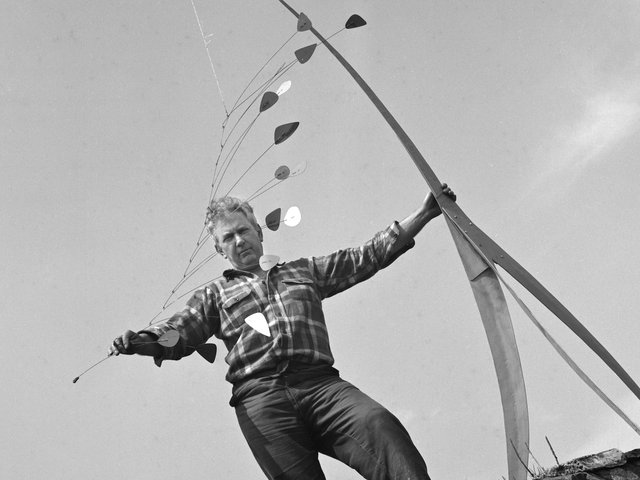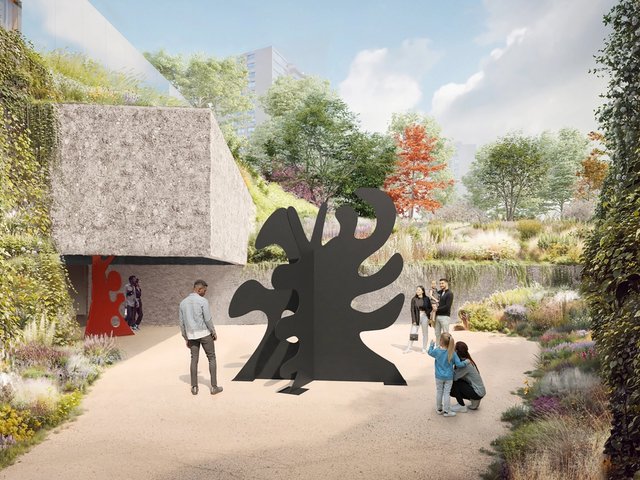Negotiations between the Calder Foundation and the city of Philadelphia for the establishment of a Calder Museum have broken down. According to the city, Alexander S. Rower, director of the foundation, has failed to provide the city with a list of works that would provide the basis for a permanent collection. According to Mr Rower, the city failed to focus its energies on the project.
Four years ago, the then mayor of Philadelphia, Edward Rendell, approached the head of the Calder Foundation with a proposal to build a Calder Museum on the Benjamin Franklin Parkway—across the street from the Rodin Museum and near the Philadelphia Museum of Art and the site of the future home of the Barnes Foundation. Together the institutions would form what the mayor envisioned as the city’s Avenue of the Arts.
Philadelphia was the ideal choice for the museum because the Calder family have lived and sculpted in the city for more than a century, leaving their mark all along the Parkway. Mr Rower’s great-great-grandfather, Alexander Milne Calder, created the statue of William Penn atop City Hall, his great-grandfather, Alexander Stirling Calder, designed the Swann Fountain at Logan Square, and Sandy Calder created a huge mobile that the Art Museum acquired for its atrium. All that was needed for the plans for the museum to go forward was for Mr Rower to come up with a list of sculptures the family was willing to commit to the project.
When Mr Rendell became governor he earmarked $15 million in State funds to the project and Gerry Lenfest, a retired cable entrepreneur and one of the city’s most active philanthropists—he is one of the three main sponsors of the Barnes’ planned move from suburban Merion—offered to match the State money and became chairman of the board of the planned Calder Museum.
The museum’s project director was Diane Dalto, a former city arts administrator whom the governor had made chairman of the State Arts Council and assigned to see the project through. She brought in Philadelphia Museum curator Ann Temkin, now with MoMA, and Philips Collection curator Beth Turner, to consult part-time on the museum, and she raised private funds to commission a design by Japanese architect Tadao Ando for the two-acre downtown site designated by the city’s Fairmount Park Commission.
In 2003 the parties reached a verbal agreement on a list of works that would be loaned to form the core collection, but Ms Dalto says, “the family then withdrew its offer” and instead offered an outright gift of certain works and a loan of others.
Mr Rower explains that “the idea was that this lead donation would elicit matching gifts from collectors”. But in January 2005, the foundation informed Ms Dalto that instead of a partial gift/partial loan, it would make an outright gift and would provide a list of available works within a month. “But by July we still had no list, and when the governor called to request a list, he got a list of categories—no specific pieces—and the majority of categories were not sculpture, but works on paper, gouaches, household utensils, and paintings. The governor, fellow trustee Bill Hankowski, and I looked at it independently and we all concluded we couldn’t build a museum around this. The list included only around 30 sculptures, whereas the original loan was to include from 80 to 100 sculptures. Thirty were too few to build a $70 million museum around them. There started to be doubt among our funders that the Calders would ever supply the art necessary to build the museum.”
Last month, after several warnings, Mr Lenfest resigned from the board and withdrew his funding. Speaking to The Art Newspaper, Mr Rower said, that there had been problems with the project. “I wanted the city of Philadelphia to hire someone to be the founding director of the Calder Museum and work on a daily basis. They never did, and never made it a priority, and that was the problem. It was a back-burner project of Ed Rendell and Gery Lenfest.”
He says that no one working on the project understood how museums work, and that as a consequence the officials never responded to his questions and negotiating points in a timely manner. Ms Dalto, who has worked on the project for years, is extremely disappointed, but is still hoping the project can be saved. “We are keeping the door open. If the Calder Foundation can commit to a gift or loan to this museum we will certainly do everything we can to revive it. We have the site, the design, the business plan. We would still love to have a Calder museum here.”



